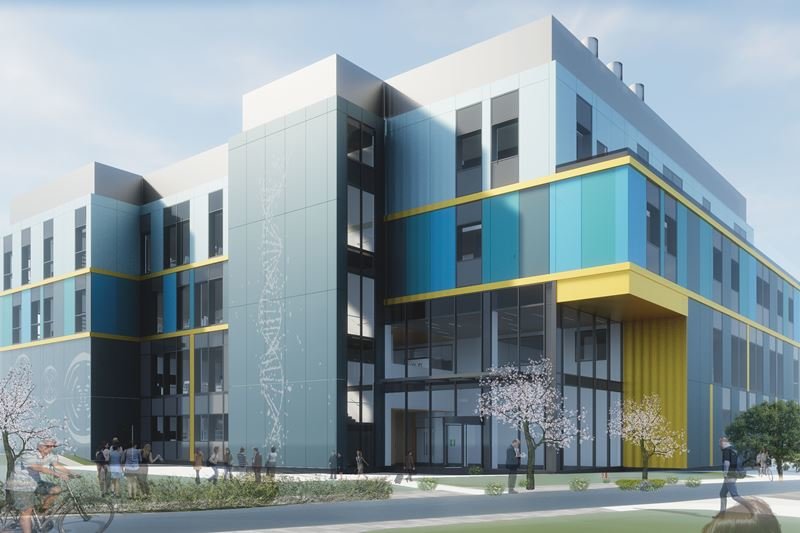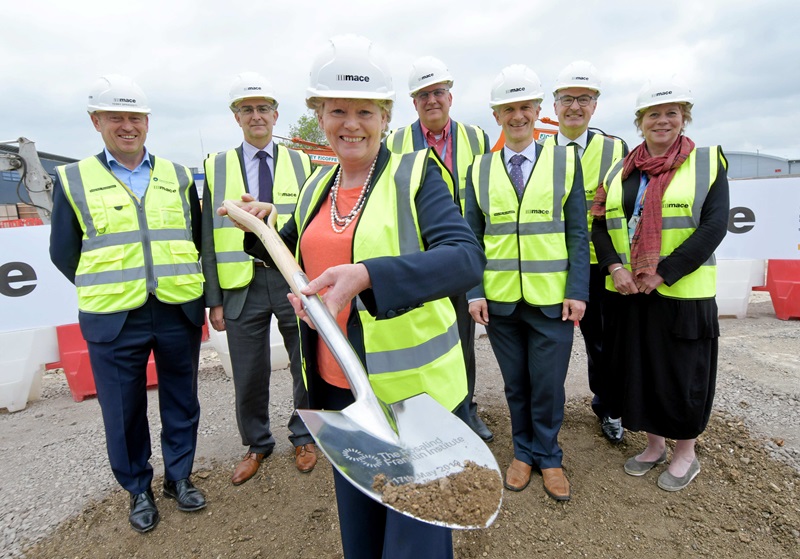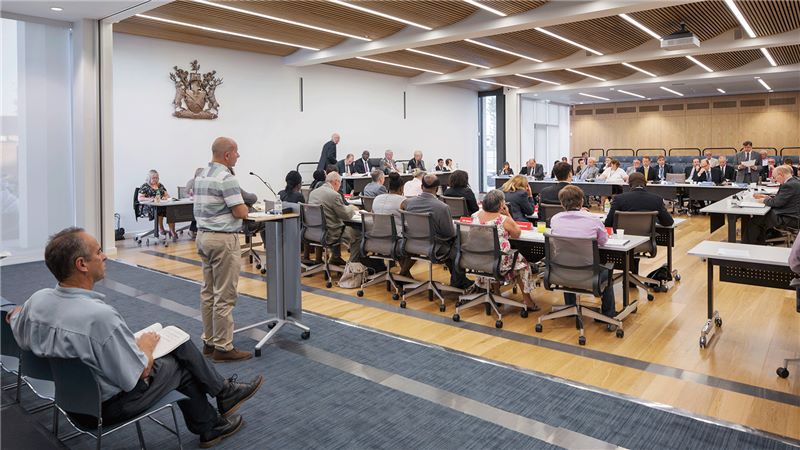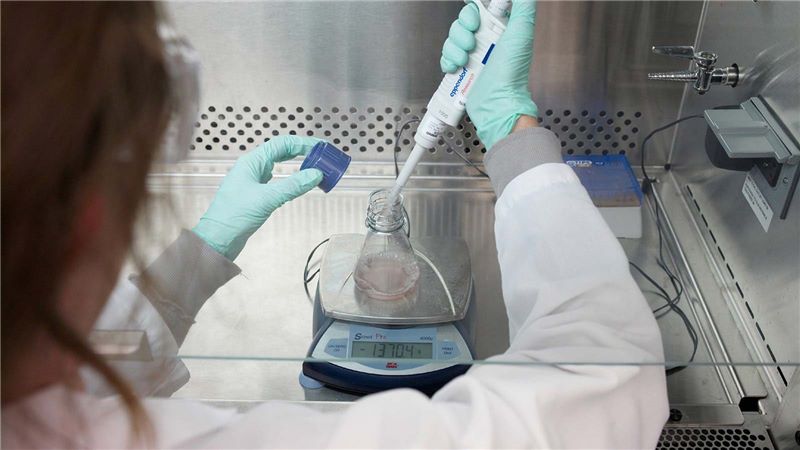Pioneering new government-funded research institute breaks ground at Harwell Campus
A ground breaking ceremony was held last week at Harwell Campus to commence work on the £40 million, 58,000 sq ft building that will form the central hub of the new Rosalind Franklin Institute.
Funded by the UK government, the Institute carries out interdisciplinary research and develops new technologies to transform our understanding of diseases and speed up drug design.
The unique design of the building sets it apart from other research facilities. The ground floor has been designed for optimum stability to house sensitive scientific instruments. This unique requirement means the foundations of the ground floor will be separated from the rest of the building to shield it from vibration.
To prevent electromagnetic interference, stainless steel reinforcement will be used in the structure, and non-ferrous materials used in the fabric, finishes, and mechanical, electrical and plumbing services. The aim is to create a close to perfect, stable environment to test the limits of specialist technologies such as electron microscopy and mass spectrometry.
The remaining three floors will house collaborative working spaces, offices and social areas as well as structural biology, chemistry and imaging laboratories, designed to be flexible to support new collaborations and avenues of technological development as the Institute grows.
The building will honour the Institute’s namesake, Rosalind Franklin, the experimental scientist famous for taking the X-ray photograph of DNA that helped establish its helical structure. The front of the building will incorporate graphics of the DNA double helix taken from the iconic X-ray photograph – known as Photo 51.
The construction will be managed by the Science and Technology Facilities Council, part of UK Research and Innovation, who are also one of the partners of the Institute alongside ten leading UK universities.
Harwell Science and Innovation Campus was chosen as the ideal site for the hub as it is not only home to other complementary research capabilities, including the STFC’s Rutherford Appleton Laboratory and Diamond Light Source, but it also attracts industrial partners who take advantage of the co-location of these national research facilities to collaborate and further their own scientific research.
Mace was appointed to deliver the project through the Southern Construction Framework.
Chair of the Rosalind Franklin Institute, Vivienne Cox, said:
“This is an exciting day for the Institute as we begin to build the hub which is such an important part of our vision. We already have several projects underway with our partners across the UK, and the hub will provide further impetus, creating a fantastic space for research and collaboration that will enable real advances to be made.”
Terry Spraggett, Managing Director for Public Sector Construction for Mace, said:
“This is a hugely important project that has the potential to transform the lives of millions through the cutting-edge research it will support. It is a complex and technically challenging build that we are proud to be delivering on behalf of the Rosalind Franklin Institute and the Science and Technology Facilities Council.”
STFC Executive Chair Professor Mark Thomson said
“One of STFC’s key initiatives in recent years has been the creation of our very successful health technology cluster here at Harwell. As the delivery partner for the new home of the Rosalind Franklin Institute we see this unique facility as an essential element in that growing health technology ecosystem and I look forward to supporting the RFI in finding answers to the great challenges of the day in the life sciences.”


Contact us
-
Mace Media Line
+44 20 3824 3600Email











